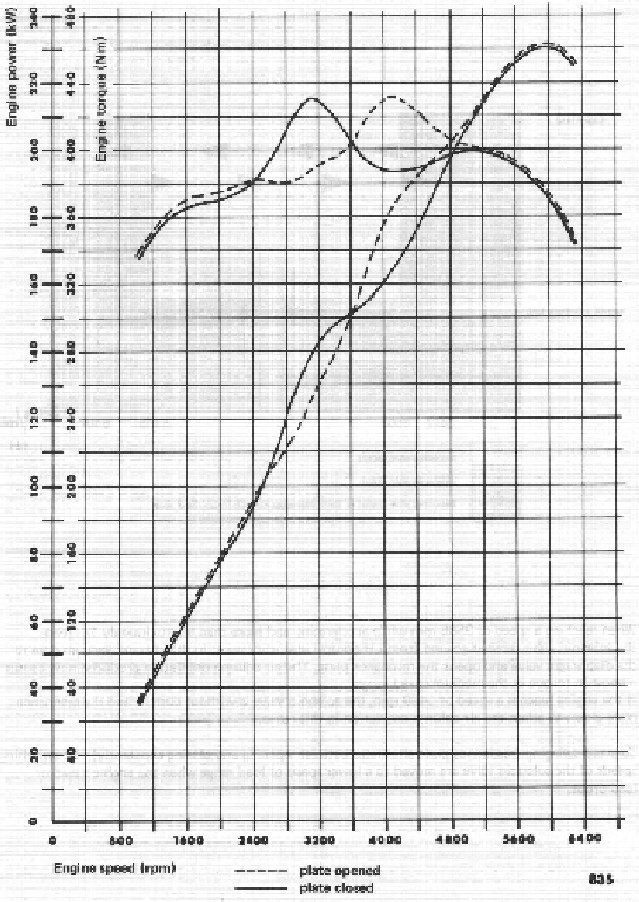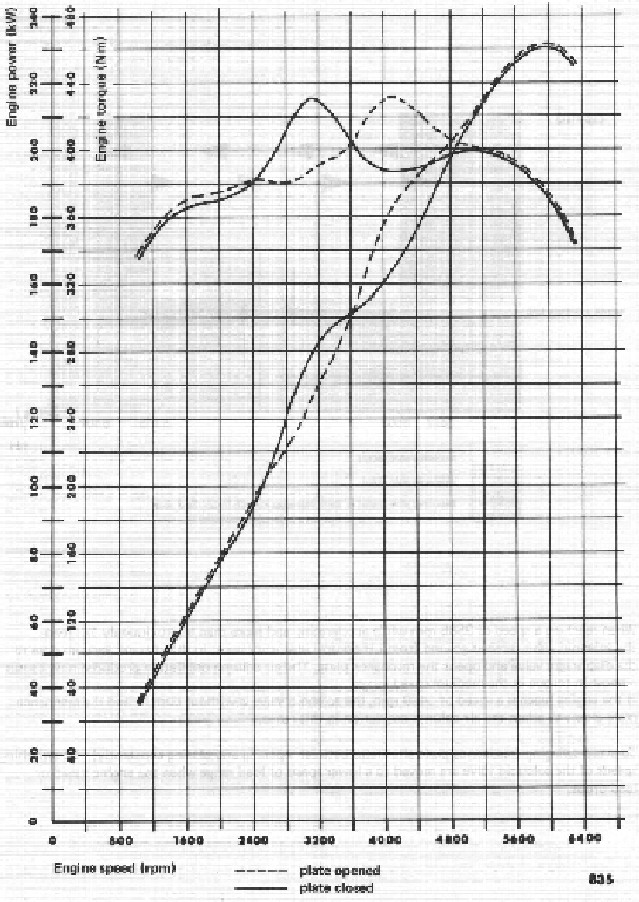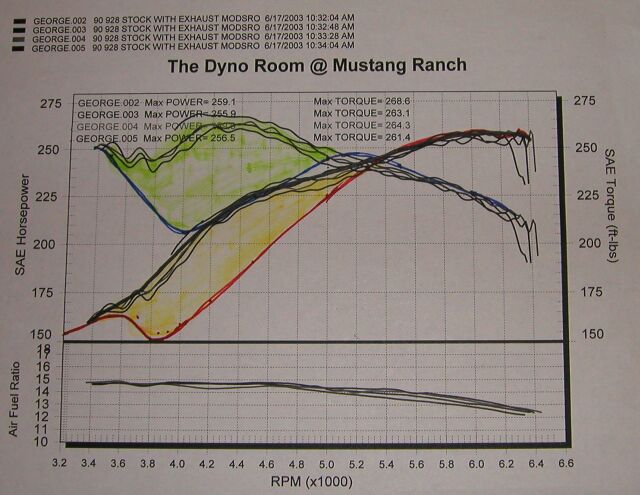
Jay , as you point out ..." Basically put...imagine the engine as
nothing
more than an air pump, quite
literally. Anything that one can do to ease the restrictions on air flow
through the engine is beneficial both from a power and efficiency
perspective. That being said, the real purpose of the muffler system is
merely to reduce the audible noise level to an acceptable level - "........
We are looking at an "air pump" but the introduction of a fuel charge
into
the "pump" makes it much more complicated , and do not overlook the
need to
"exhaust" the burned air/fuel residue before charging it with air and
fuel
for the next explosion . The most efficient engines operate over a very
narrow RPM range , to get an engine to start idle at 750 then make power to
7,000 rpm requires many compromises . The length of the intake runners
maximizes power at a specific narrow rpm range , the S-4 Flappy Valve opens
an alternative air path tuned to a different RPM hence the two torque peaks
evidenced for an S-4 . The first "natural resonance" occurs at 2,700
rpm the
second at 4,000 rpm . The same is true of exhaust systems , each exhaust
pipe length functions best at a narrow rpm range . Back pressure in the
exhaust helps to "hold "the new air/ fuel charge in the cylinder and
at
certain rpm reversion can occur to push air/fuel back into the cylinder to
"overfill" the cylinder . Small 2 stroke race boats used a trombone
exhaust
pipe , the driver manually lengthen and shortened the exhaust pipe for more
torque in the corners and more top speed HP in the straights . Some Honda
race bikes ran a throttle body , butterfly in the exhaust for similar tuning
benefits . Camshafts are a huge compromise , hence the different Vario Cam
timing arrangements used on newer engines including the 968 Porsche 4
cylinder to try to broaden the "sweet spot" . It also explains the
benefits
of advancing or retarding the camshaft timing to either raise or lower the
rpm where an engine is most efficient , a gain at one end in exchange for
losses at the other . All of the above must be factored into the engine
design to determine at what RPM it will be efficient - simply stated IT IS
NOT SIMPLE ..... an engine with no intake runners and no exhaust manifold
runs like crap --- the old Cox .049 model airplane engine is a perfect
example , a little diesel engine that chops out part of the air/fuel that is
flowing through it and pops it off with a glow plug .... Even Top Fuel
dragsters , thousands of horsepower supercharged , Nitro use exhaust pipes .
Jim Bailey
+++



Taken from a dyno run from George Suennen. The green area is what the flappy takes care of.
==============
With the intake flap closed you have two separate intake systems closed off
from each other by the center valve/flap. Each side plenum is fed from the
common plenum underneath the manifold which is fed by the common throttle. Each
side plenum in turn feeds two cylinders on each side of the engine. Those
cylinders will generate intake pulses every 180 deg of crank rotation. That's
why two cyl from each side are required because if using all four cylinders on
one side for each side plenum, the intake pulses wouldn't be evenly spaced due
to the type of crankshaft. Without evenly spaced intake pulses, you wouldn't
have the tuned resonance characteristic of the side plenum. Parameters that
determine the frequency (RPM) of the Helmoltz tuned intake is the volume of the
plenum, the volume of all four intake runners, and the size and length of the
tube feeding the plenum. That tube is the short tube connecting the lower plenum
to each side plenum. That all works to give the torque peak (increase in VE) at
around 3000 rpm. The Helmholtz resonance gives a rather big boost to torque at
the peak, but it's pretty narrow and if left functional above the resonant RPM
area will cause a loss of torque. That's the dip after the peak and where the
flap opens to destroy the resonance in the side plenums. Then they act simply as
an air chamber to feed the intake runners which have their own resonance RPM.
The runners are not equal length so the torque (VE) increase from their tuned
lengths is distributed throughout an RPM range roughly in the 4300 to 5000 area.
The Helmholtz tuning comes in to play again at a higher RPM so the flap closes
around 5500 to help a little bit on the top end. The help at the top end is not
a lot as compared to the 3000 RPM resonance.
Louis Ott
-------------
The defaults (available in the screen shots of the SharkTuner User Manual,
available for download from my website) are :
Flappy opens at 3600rpm, flappy closes at 5880rpm. Load threshold 39 (on a scale
of 1-255).